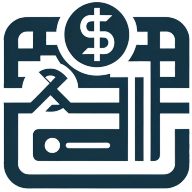6 Kpis to Track the Effectiveness of Payroll Operations
Efficiency and accuracy in payroll operations are vital to any organization's financial health. Knowing which key performance indicators (KPIs) to track can be the difference between success and costly errors. This article delves into the essential KPIs that illuminate the effectiveness of your payroll processes.
- Track Payroll Accuracy Rate
- Monitor On-Time Payment Percentage
- Measure Employee Satisfaction with Payroll
- Evaluate Cost Per Payroll Transaction
- Count Payroll Errors Per Cycle
- Assess Payroll Processing Time
Track Payroll Accuracy Rate
One key performance indicator (KPI) I track to measure the effectiveness of payroll operations is the "Payroll Accuracy Rate." This KPI measures the percentage of payroll transactions processed correctly, without errors in calculations, deductions, or payments. A high accuracy rate indicates a smooth payroll process, while a low rate highlights areas for improvement. It's an essential metric for ensuring that employees are paid correctly and on time, which directly affects morale and trust within the organization.
By regularly monitoring this KPI, we can identify patterns and areas where errors tend to occur, such as in data entry or during transitions between systems. For continuous improvement, we implement additional checks or automation where needed, ensuring a higher level of precision in each payroll cycle. Over time, tracking this metric has allowed us to optimize our payroll process, reduce errors, and create a more efficient system that benefits both employees and the business.
Monitor On-Time Payment Percentage
The on-time payment percentage is a crucial KPI for assessing payroll operations. It measures how often employees receive their payments on the expected date. A high on-time payment percentage indicates that the payroll department is efficient and reliable. Employers should aim to achieve and maintain this rate as it directly impacts employee satisfaction.
Ensuring consistency in payment dates helps build trust with the workforce. Organizations must prioritize the improvement of this metric. Start monitoring your on-time payment percentage today and take steps to enhance it.
Measure Employee Satisfaction with Payroll
Employee satisfaction with payroll is a vital KPI, reflecting the overall experience of employees with the payroll process. High satisfaction levels indicate that employees have confidence in the payroll system and feel secure that they will get paid correctly and on time. This KPI can be measured through regular surveys and feedback forms, allowing employers to identify areas for improvement.
By addressing any concerns raised by employees, companies can foster a more positive work environment. Employee satisfaction directly impacts motivation and productivity. Focus on improving your payroll system to boost employee satisfaction.
Evaluate Cost Per Payroll Transaction
The cost per payroll transaction processed is another important KPI to measure. This metric indicates the average expense incurred for each payroll transaction. Lowering this cost can lead to significant company savings, demonstrating the efficiency of payroll operations.
It incorporates various factors such as processing time, software costs, and labor. By analyzing and reducing this cost, a company can allocate resources more effectively. Evaluate your payroll processes and find ways to cut costs without compromising quality.
Count Payroll Errors Per Cycle
Tracking the number of payroll errors per cycle is key to evaluating payroll accuracy. A lower frequency of errors signifies that the payroll system is functioning well and reducing discrepancies. Errors can result in employee dissatisfaction and potential fines for the company.
It is essential to identify common errors and their root causes to prevent them from recurring. Fixing these issues contributes to smoother payroll operations. Take action to reduce payroll errors by implementing stricter checks and balances.
Assess Payroll Processing Time
The time it takes to process payroll each cycle is a critical KPI for assessing payroll efficiency. Shorter processing times can save the company money and free up staff time for other tasks. This metric includes the total time taken from initial data entry to the final disbursement of funds.
If payroll processing takes too long, it could indicate inefficiencies or outdated systems. Speeding up this process can result in more timely payments to employees. Aim to streamline your payroll processing method for better efficiency.


